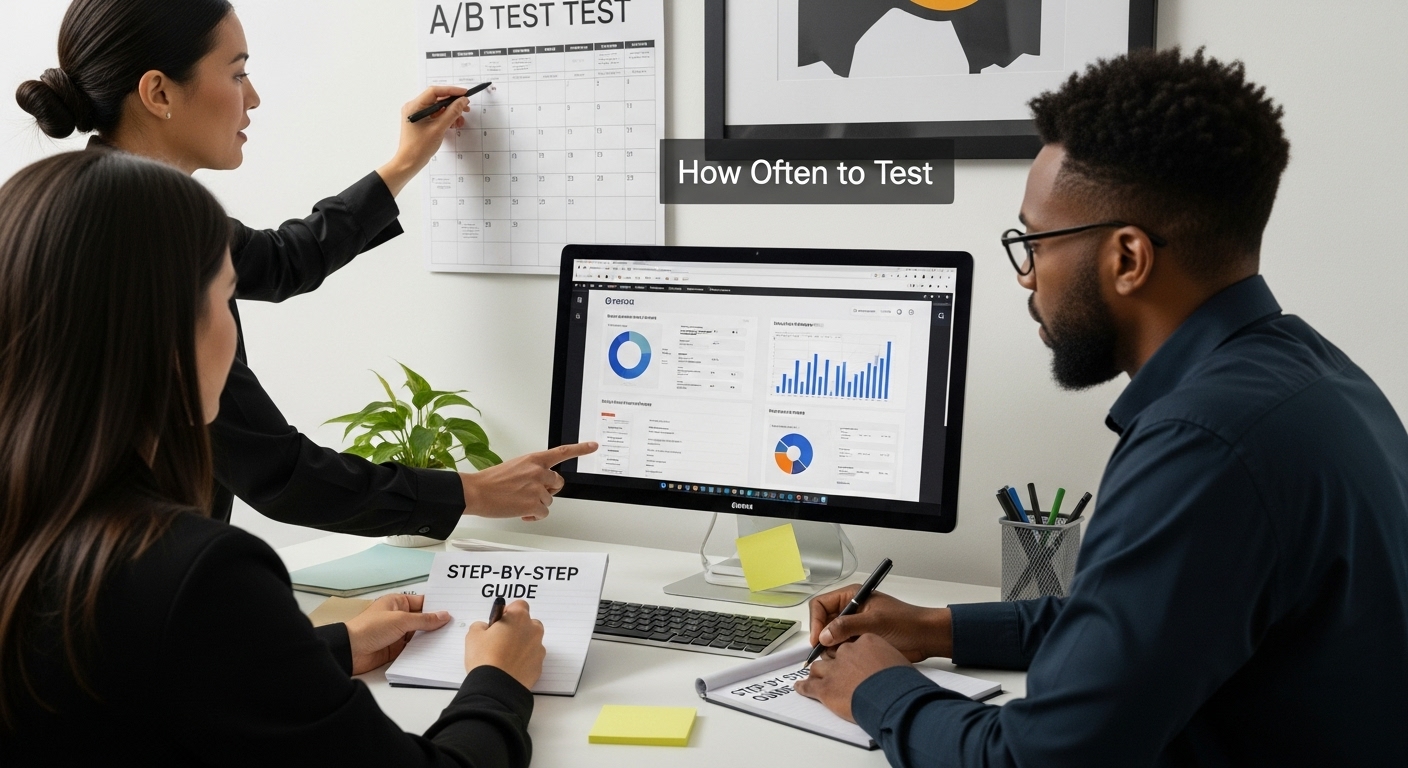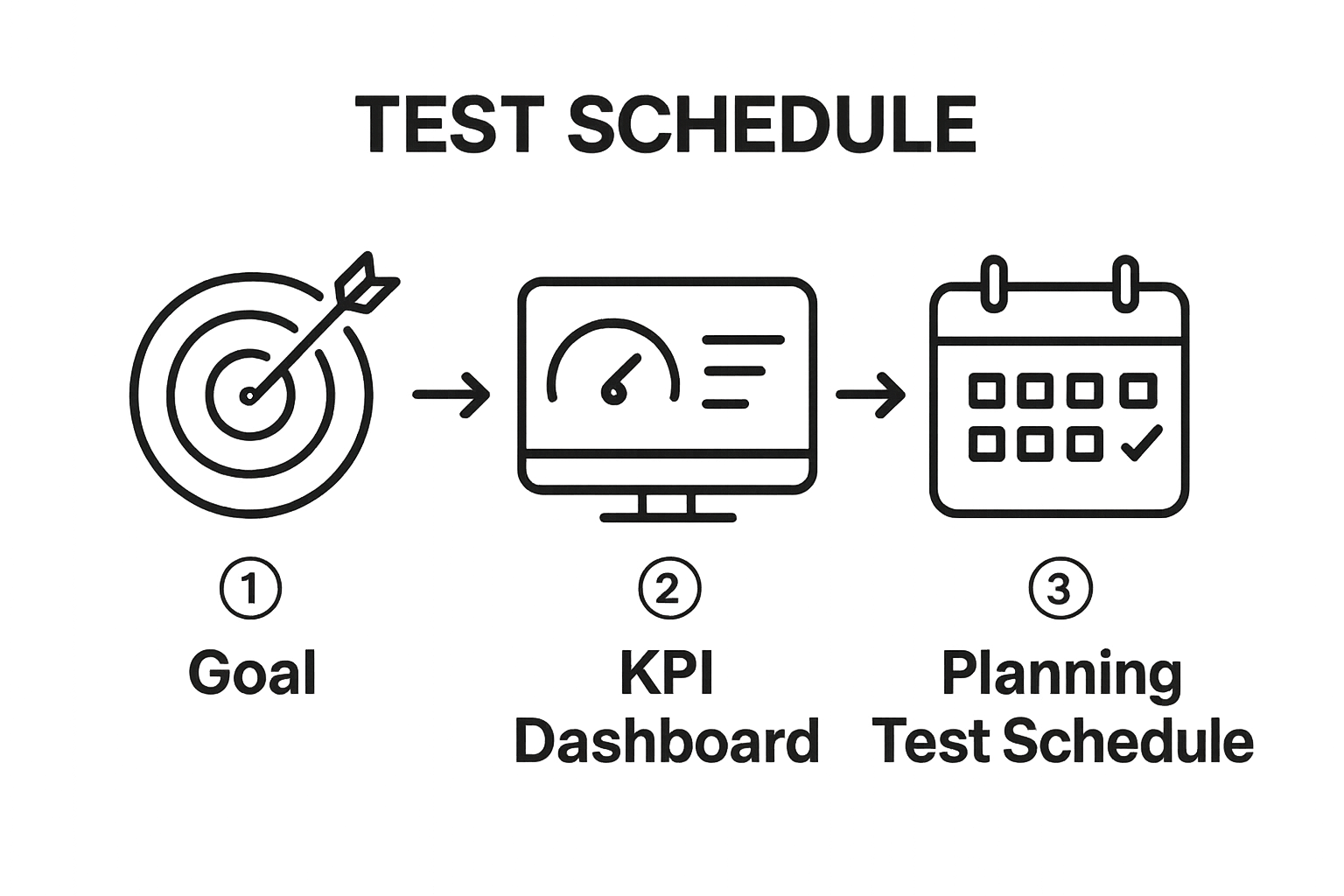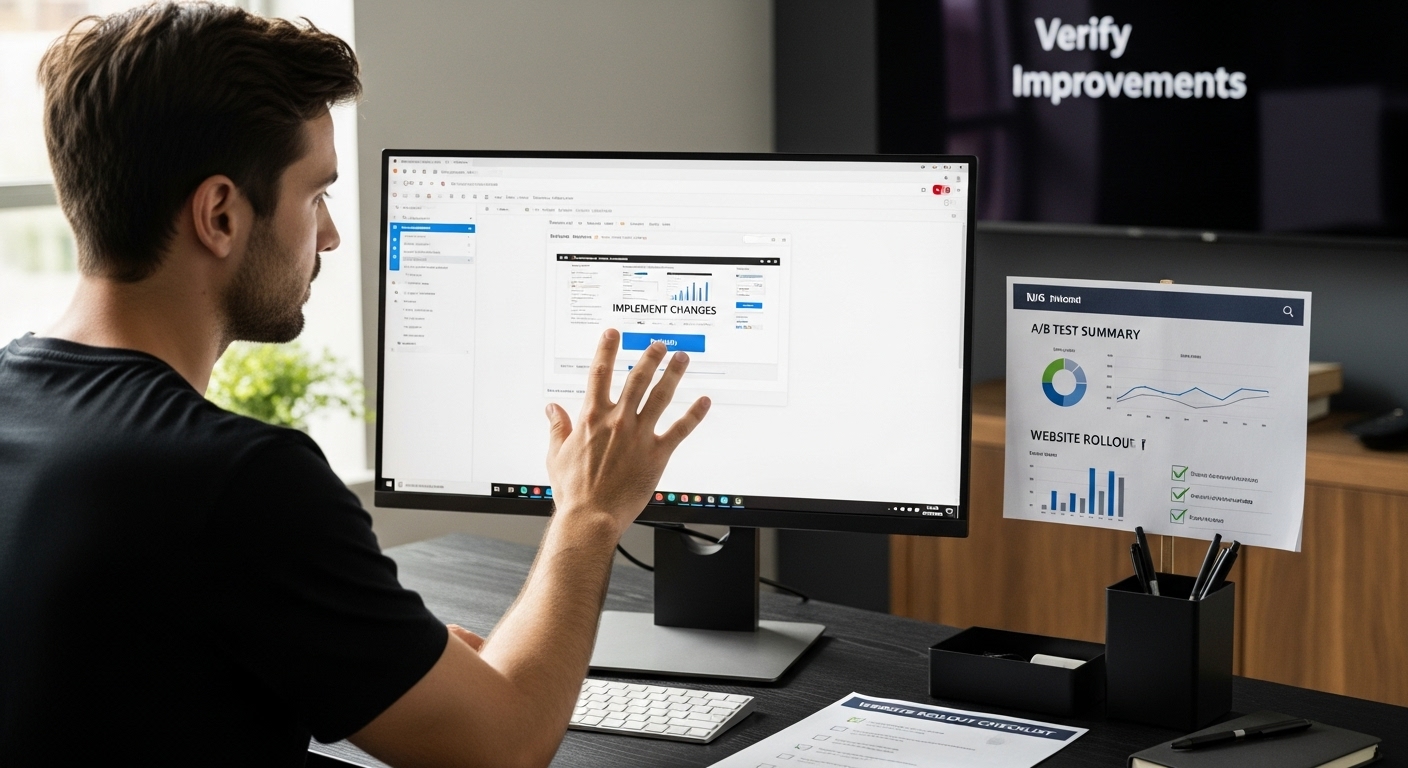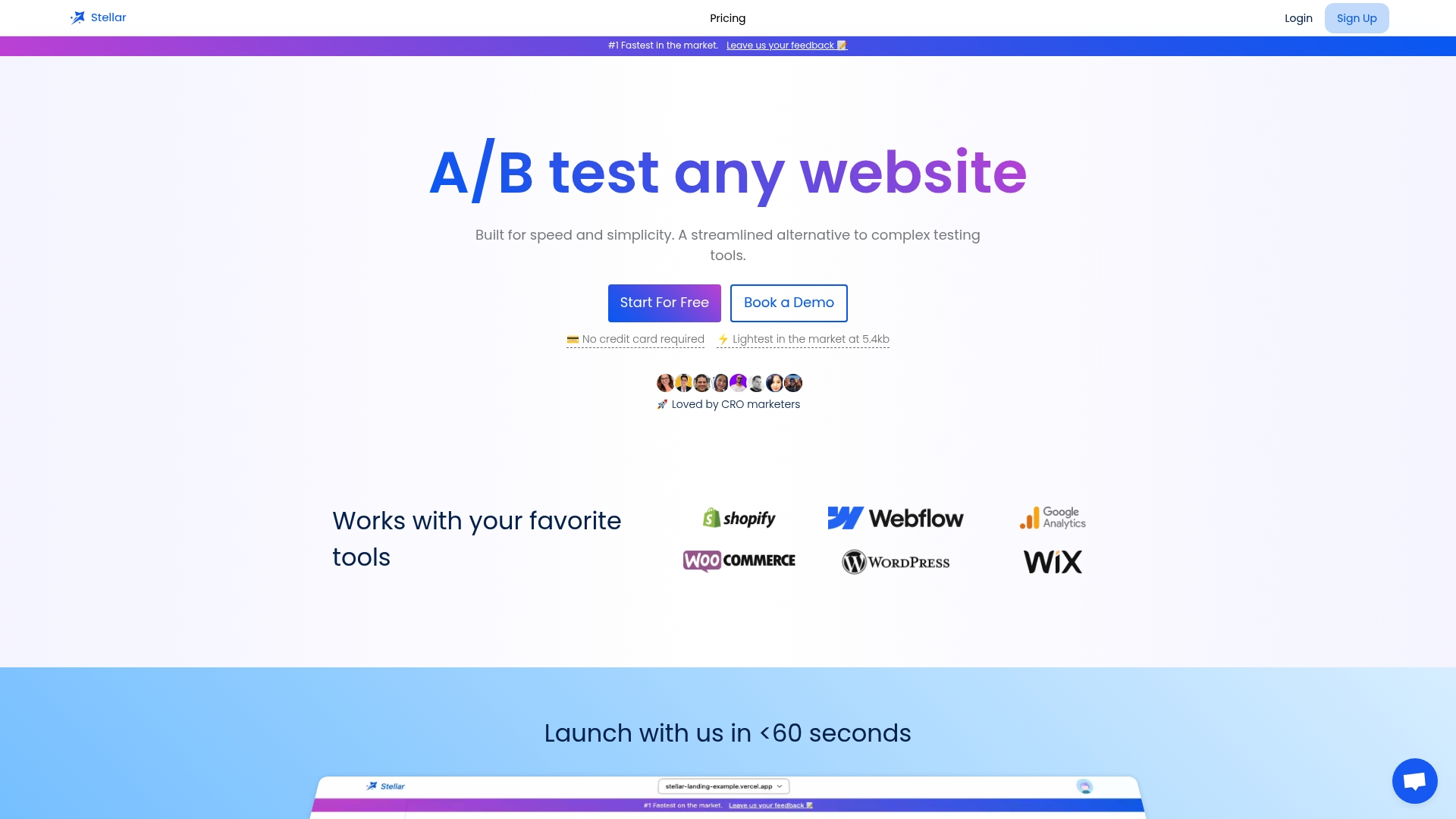
How Often to Test: A Step-by-Step Guide for Marketers

A/B testing is everywhere in digital marketing, shaping the way businesses fine-tune websites and boost results. Yet most experiments flounder and miss their mark. Only about 1 in 8 A/B tests actually produces a statistically significant improvement. It turns out the secret sauce is not running more tests. It is setting the right goals, choosing sharp metrics, and learning how to test smarter rather than faster.
Table of Contents
- Step 1: Define Testing Goals And Objectives
- Step 2: Identify Key Performance Indicators (KPIs)
- Step 3: Plan Testing Frequency Based On Data Insights
- Step 4: Execute Tests And Gather Results
- Step 5: Analyze Data And Adjust Testing Schedule
- Step 6: Verify Improvements And Implement Changes
Quick Summary
| Key Point | Explanation |
|---|---|
| 1. Define Clear Testing Goals | Establish specific, measurable objectives that align with business outcomes to guide your A/B testing efforts. |
| 2. Select Relevant KPIs | Use key performance indicators that directly reflect your primary business objectives for meaningful insights from your tests. |
| 3. Plan Testing Frequency | Schedule tests based on website traffic and statistical significance to maximize actionable insights while managing resources. |
| 4. Execute Tests Rigorously | Maintain technical consistency during tests and avoid interim adjustments to ensure trustworthy results. |
| 5. Verify and Implement Changes | Validate improvements with a comprehensive review before incorporating changes into your digital ecosystem to drive real business enhancement. |
Step 1: Define Testing Goals and Objectives
Defining clear testing goals and objectives is the foundational step that determines the success of your conversion rate optimization (CRO) efforts. Without precise objectives, your A/B testing becomes a directionless experiment that wastes resources and provides minimal insights. Your testing goals must connect directly to specific business outcomes and be measurable in concrete terms.
Start by examining your current performance metrics and identifying areas where incremental improvements could generate significant impact. Are you looking to increase signup conversions, reduce cart abandonment rates, or improve user engagement on a specific webpage? Each goal requires a different testing approach and measurement strategy. Business goals should translate into specific, quantifiable testing objectives.

Consider creating objectives that follow the SMART framework: Specific, Measurable, Achievable, Relevant, and Time-bound. For instance, instead of a vague goal like "increase conversions," craft a precise objective such as "Increase product page conversion rates by 15% within the next 90 days by testing two distinct call-to-action button designs." This level of specificity provides clarity and enables precise tracking.
As you outline your testing goals, align them with key performance indicators (KPIs) that matter most to your organization. These might include:
- Conversion rate improvements
- Average order value increases
- Reduction in bounce rates
- Enhanced user engagement metrics
By establishing clear goals upfront, you create a strategic roadmap that guides your entire testing process.
Here is a summary table outlining each step of the A/B testing process described in this guide. Use this as a quick reference for the flow, focus, and outcomes of each stage.
| Step | Focus Area | Key Outcome |
|---|---|---|
| 1 | Define Goals & Objectives | Set clear, measurable test goals aligned with business results |
| 2 | Identify KPIs | Select primary and supporting KPIs that match business priorities |
| 3 | Plan Testing Frequency | Develop a program guided by traffic volume and statistical significance |
| 4 | Execute Tests | Run rigorous, unbiased tests with reliable data collection |
| 5 | Analyze Data | Draw actionable insights and optimize test scheduling |
| 6 | Verify & Implement Changes | Validate improvements and roll out updates for ongoing growth |
Step 2: Identify Key Performance Indicators (KPIs)
Identifying the right Key Performance Indicators (KPIs) transforms your A/B testing from a random experiment into a strategic business optimization process. KPIs are the compass that guides your testing efforts, providing clear signals about what success looks like for your specific business context. Not all metrics are created equal, and selecting the most relevant indicators requires a nuanced understanding of your organizational goals and user behavior.
Effective KPI selection demands a holistic view of your digital ecosystem. Begin by mapping metrics that directly correlate with your primary business objectives. For e-commerce platforms, this might include conversion rates, average order value, and cart abandonment rates. For SaaS businesses, focus on metrics like user activation, retention, and monthly recurring revenue. The goal is to choose indicators that provide meaningful insights into user experience and business performance.
Prioritize metrics that offer actionable intelligence rather than vanity measurements. Conversion rates, engagement time, bounce rates, and click-through percentages are typically more valuable than surface-level data points. Quantitative metrics should be complemented by qualitative insights to provide a comprehensive understanding of user behavior. This means combining hard numbers with user feedback, session recordings, and heatmap analyses.
Consider establishing a hierarchy of KPIs that reflects the complexity of your testing goals. Primary KPIs represent your main objective, while secondary KPIs offer supporting context and help you understand the broader impact of your experiments. For instance, if your primary KPI is conversion rate, secondary KPIs might include time on page, scroll depth, and user interaction rates.
Explore advanced analytics techniques for deeper testing insights to ensure you're capturing the most relevant performance indicators. By carefully selecting and tracking the right KPIs, you transform A/B testing from a speculative activity into a precise, data-driven optimization strategy.
Step 3: Plan Testing Frequency Based on Data Insights
Planning testing frequency is a strategic process that requires balancing statistical significance with practical business constraints. Your testing cadence should be dynamic, responding to current performance metrics, website traffic, and the potential impact of proposed changes. Frequency is not about running endless tests, but about running meaningful experiments that drive actionable insights.
Begin by establishing a baseline testing rhythm that aligns with your website's traffic volume and conversion rates. High-traffic websites can run more frequent tests and achieve statistical significance faster, while lower-traffic sites need a more measured approach. A general rule of thumb is to ensure each test reaches a minimum of 95% statistical confidence before launching another experiment. This typically means collecting enough data to validate that observed changes are not random fluctuations.
Consider your testing frequency through the lens of resource allocation and potential business impact. Not every page or element requires constant testing. Prioritize experiments on high-traffic pages with significant conversion potential, such as landing pages, product pages, and checkout flows. For most businesses, running 2-4 comprehensive tests per month provides a balanced approach that allows sufficient time for data collection, analysis, and implementation of learnings.
Your testing schedule should also account for seasonal variations, marketing campaigns, and significant business events. During peak traffic periods like holiday seasons, you might increase testing frequency to capitalize on higher visitor volumes. Conversely, during slower periods, focus on deeper, more nuanced experiments that require longer observation windows.
Discover strategies for overcoming common A/B testing challenges to refine your testing approach. Remember that testing is an iterative process. Each experiment provides insights that inform your next round of optimization, creating a continuous improvement cycle that gradually enhances your digital experience.
Step 4: Execute Tests and Gather Results
Executing A/B tests requires precision, patience, and a systematic approach to data collection. The execution phase transforms your carefully crafted hypotheses into actionable insights, determining whether your proposed changes genuinely impact user behavior. This step is about maintaining rigorous experimental conditions while collecting comprehensive performance data.
Begin by implementing your test variants with absolute technical accuracy. Ensure that your control and experimental versions are identical in all aspects except the specific element you are testing. Technical consistency is critical preventing data contamination. Use robust A/B testing platforms that provide clean segmentation and real-time tracking. Split your website traffic evenly between variants, maintaining a statistically representative sample that minimizes potential sampling bias.
During the test execution, resist the temptation to make premature judgments. Statistical significance requires patience and a predetermined sample size. Most meaningful tests need to run for at least one complete business cycle - typically 7 to 14 days - to account for variations in user behavior across different days of the week. Monitor your test continuously but avoid making interim adjustments that could compromise the experiment's integrity.
Track multiple performance indicators simultaneously to gain a holistic understanding of your test's impact. While your primary KPI might be conversion rate, secondary metrics like bounce rate, time on page, and user engagement can provide nuanced insights into why certain variations perform better. Pay close attention to segment-specific performance, as different user groups might respond uniquely to your experimental changes.
Learn advanced techniques for analyzing A/B test result reporting to ensure you extract maximum value from your experiments. The execution phase is more than just running a test it is about creating a controlled environment that reveals genuine user preferences and behavior patterns.
Step 5: Analyze Data and Adjust Testing Schedule
Data analysis represents the critical pivot point where raw experimental results transform into strategic business intelligence. Comprehensive analysis goes far beyond simple statistical comparisons, requiring a multifaceted approach that unpacks the nuanced implications of your A/B testing experiments. The goal is not just to determine a winner, but to understand the deeper behavioral patterns driving user interactions.
Begin your analysis by establishing clear benchmarks and statistical thresholds before interpreting results. Look beyond headline conversion rates and examine granular metrics that reveal user experience subtleties. Pay close attention to segment-specific performance variations, understanding how different user groups respond to experimental changes. Some variations might show marginal improvement overall but demonstrate significant impact within specific audience segments, presenting opportunities for targeted optimization.
Interpreting test results demands a disciplined, objective mindset. Statistical significance is your primary filter, but context matters equally. Evaluate whether observed improvements are meaningful enough to warrant implementation, considering factors like development cost, potential user experience disruption, and long-term strategic alignment. Not every statistically significant result represents a practical business improvement.
Your testing schedule should become a living document, dynamically adjusted based on ongoing analysis insights. If certain pages or user journeys consistently demonstrate high variability or unexpected results, increase testing frequency for those specific areas. Conversely, stable, high-performing sections might require less frequent experimentation. Explore advanced test duration recommendations to refine your approach and maximize experimental efficiency.
The final stage of analysis involves translating data insights into actionable optimization strategies. Document not just the numerical outcomes, but the underlying user behavior patterns, hypotheses validated or challenged, and potential future testing directions. This systematic approach transforms A/B testing from a tactical exercise into a strategic mechanism for continuous digital experience enhancement.
Step 6: Verify Improvements and Implement Changes
Verifying improvements and implementing changes represents the critical translation point where experimental insights become tangible business enhancements. This step is not merely about accepting statistical results, but strategically integrating validated optimizations into your digital ecosystem. The verification process demands a comprehensive approach that goes beyond surface-level metrics and considers long-term performance implications.
Carefully validate your test results by conducting a holistic review of both primary and secondary performance indicators. Look for consistent improvement across multiple metrics, not just the headline conversion rate. A true optimization should demonstrate positive shifts in user engagement, reduced friction points, and alignment with broader business objectives. Consider running a secondary validation test to confirm the initial findings, especially for changes that represent significant departures from your existing design or user experience.
Implementation requires a measured, phased approach that minimizes potential disruption. Begin by creating a detailed rollout plan that outlines precise implementation steps, potential risks, and rollback mechanisms. Segment your implementation to allow for incremental deployment, which enables real-world performance monitoring without exposing your entire user base to potential issues simultaneously. This approach allows you to validate improvements in controlled environments before full-scale implementation.
Documentation becomes crucial during this phase. Capture not just the changes implemented, but the entire experimental journey including initial hypotheses, test parameters, and specific insights that drove the decision. This creates an institutional knowledge base that informs future optimization efforts and helps build a culture of data-driven decision making.
This table offers a checklist to help you verify improvements before implementing any changes based on your A/B tests. Use it to ensure each optimization is validated thoroughly.
| Verification Step | Description |
|---|---|
| Review Primary KPIs | Confirm that your primary metrics show statistically significant improvement |
| Check Secondary Metrics | Ensure supporting indicators (engagement, bounce rate) also trend positively |
| Conduct Additional Validation | Consider running a follow-up test for major changes |
| Develop Rollout Plan | Outline clear steps, assign responsibilities, and list rollback measures |
| Segment Implementation | Deploy change incrementally to smaller user segments first |
| Document Process & Learnings | Record hypotheses, parameters, outcomes, and process for future knowledge sharing |
| Monitor Long-term Performance | Continue tracking metrics post-implementation to confirm sustained improvement |
Remember that implementation is not the end of your optimization journey, but a continuous cycle of measurement, learning, and refinement. Each implemented change should be viewed as a stepping stone toward progressively improving user experience and driving meaningful business outcomes.

Turn Every Test Into Growth With Stellar
Are you tired of running A/B tests that drain resources without delivering real results? If you struggle to set clear goals, track the right KPIs, or interpret your data, you are not alone. Many marketers face the same roadblocks when trying to optimize conversion rates and prove business impact. The article above outlines the critical steps for successful testing, but manual processes and clunky tools often slow you down.

Ready to simplify your optimization journey and see faster wins? Stellar’s ultra-lightweight platform removes technical headaches so you can focus on strategic testing and real-time insights. With a no-code visual editor, advanced goal tracking, and instant analytics, you can move from planning to execution without delays. Start on Stellar’s landing page today to accelerate your A/B testing schedule, build a smarter experimentation framework, and stay ahead of the competition. Explore all solutions for effective CRO at gostellar.app now and transform every experiment into business growth.
Frequently Asked Questions
What are the key steps for effective A/B testing?
To conduct effective A/B testing, define clear testing goals, identify relevant KPIs, plan your testing frequency, execute tests accurately, analyze results comprehensively, and verify improvements before implementing changes.
How often should I run A/B tests on my website?
The frequency of A/B testing depends on your website's traffic volume. High-traffic sites can run tests more frequently, while lower-traffic sites should prioritize meaningful experiments over quantity. Aim for 2-4 comprehensive tests per month for balanced results.
What are Key Performance Indicators (KPIs) in A/B testing?
KPIs are metrics that gauge the success of your testing efforts. Common KPIs include conversion rates, average order values, and user engagement metrics. Selecting the right KPIs is essential for understanding the impact of your tests on business goals.
How do I analyze data after running A/B tests?
After running A/B tests, analyze the data by establishing benchmarks, checking for statistical significance, reviewing performance metrics beyond conversion rates, and understanding user behavior. Use these insights to inform future testing and optimization strategies.
Recommended
Published: 9/30/2025